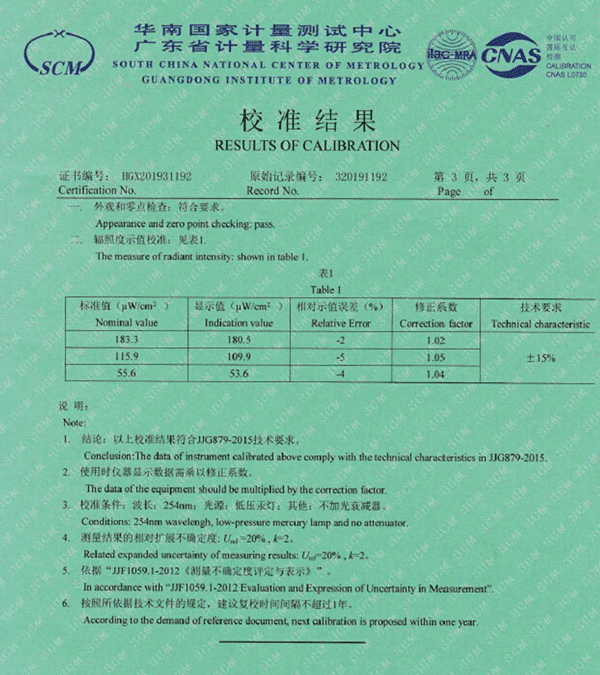UV Radiation Meter Calibration Report
Those who are concerned about the portable UV radiation meter industry will certainly know that instruments that have been calibrated by the National Metrology Institute are relatively accurate when making measurements. So how do you judge the accuracy of the instrument through the calibration report of the instrument? Below we take the Linshang LS126C calibration report as an example to do a detailed interpretation of a portable UV radiation meter measurement test report.

The UV meter calibration report has a total of 3 pages. The first page is mainly about the client and the product model to be calibrated. The second page mainly introduces the authorized certificate number, traceable source, calibration technology basis, instrument used for calibration, calibration location and environmental conditions. The first two pages of information are relatively simple and easy to understand.
We focus on the third page. The third page mainly refers to whether the appearance of the instrument and the zero check meet the requirements and the display the calibration results. Three sets of standard values 183.3, 115.9, and 55.6 are set in the table. Relative indication errors and correction factors and display values are displayed respectively after the table. The specific understanding of these three values is as follows:
1. Display value
This value refers to the measured value of the instrument.
2. Relative indication error
The indication error refers to the error between the measured value of the portable uv radiation meter and the true value of the measured object. It is caused by various errors in the portable uv radiation meter itself. The indication error is relative. Since the true value cannot be determined, we are actually using the agreed real or actual value. When the instrument accepts high-level measurement standards and recurring values, we generally agree it as the true value. Therefore, the relative indication error = display value - standard value (true value)
3. Correction factor
The correction factor specifically refers to the deviation between the actual value and the true value when performing data calculation or data measurement. The factor added to process the calculation formula in order to show the authenticity of the data as much as possible. Simply put: correction factor = true value / measured value. So we are using this portable UV irradiation timing to multiply the display data by the correction factor.
The above is a detailed interpretation of the portable uv radiation meter calibration report. Hop this interpretation can help you !